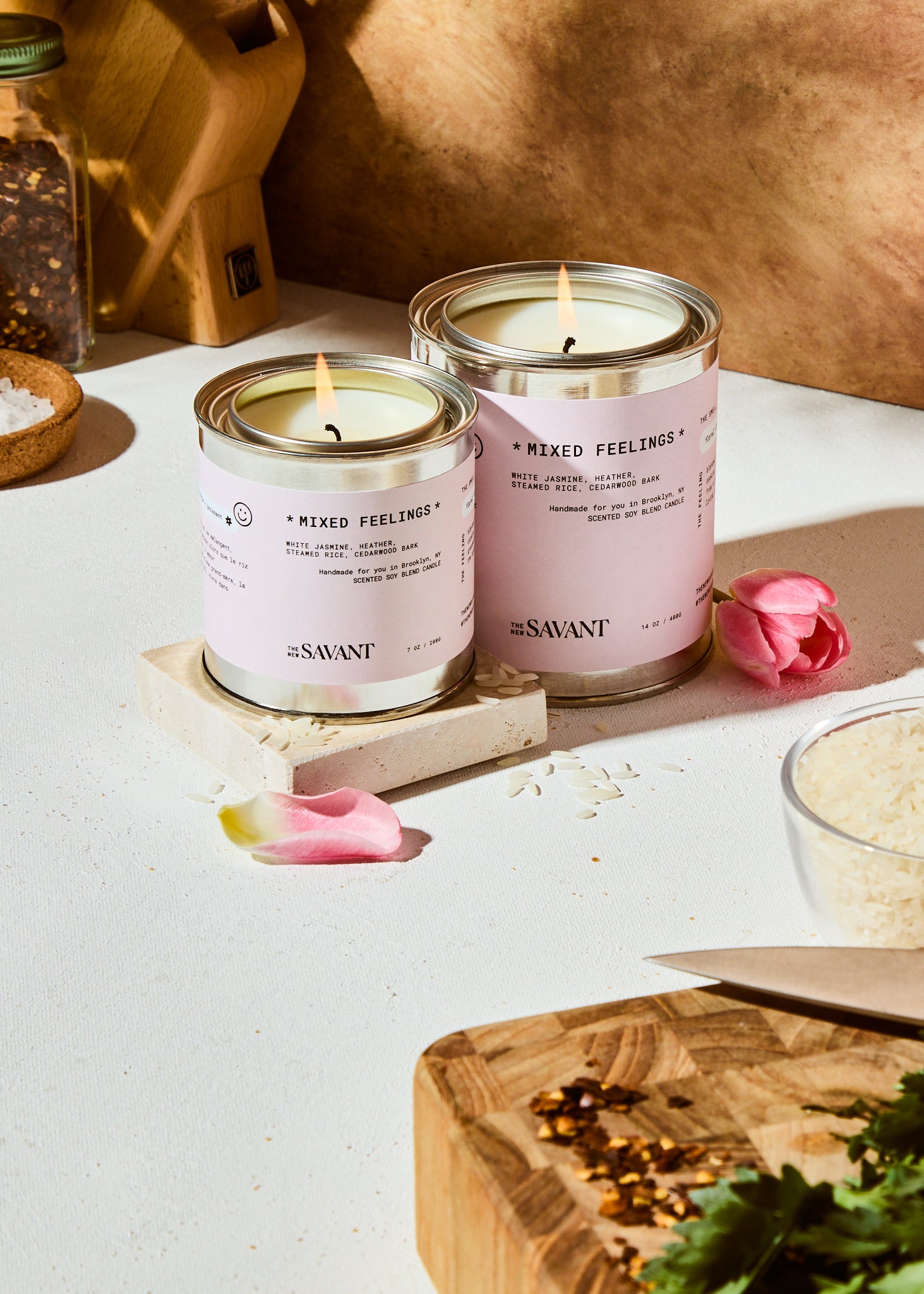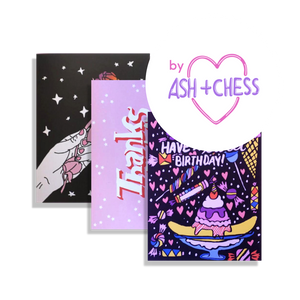
What flowers teach us about the history of fragrance
by Erica Anderson
·
I met Storm Greenwood, or perhaps more accurately, Dr. Greenwood, through The New Savant. A loyal customer, Storm has been buying our candles since we launched. (Her go-to is The Dropout, which she tells me she burned during late nights working on her thesis.)
Over Instagram, Storm and I messaged, then moved to email, and eventually to an in-person conversation. It was then that I began to fully grasp her extraordinary expertise in the history of botanicals. As an indie fragrance brand that works to center a wider range of lived scent experiences, I was drawn to her insights about the hidden story of botanicals, and in particular, how they are tied to colonization.
In this process, I invited Storm to use her artistic talents to deconstruct the botanicals used in a popular TNS candle, Mixed Feelings, and then to tell us all what she learned in the process. Here is that artwork, along with an excerpt from our Q&A.

Erica (she/they): You recently completed your Ph.D. at the Glasgow School of Art. Can you tell me how you got into this field of study, and what drew you to it?
Storm (she/her): Flowers contain so many of life’s great mysteries. Birth, growth, death, renewal, beauty and pain are all evident in their short life cycles and they were flowering millennia before humans evolved. It would be easy to say that plants play a very important role in human history, but really I think humans have played a role in the history of plants. Studying the intertwined history of plants and people has allowed me to explore topics as diverse as citational practices, horticulture and queer theory and I feel lucky to write and create with plants as companions.
Erica: Over the course of your work, you honed in on the ways in which flowers are tied to histories of colonization. As a fragrance brand, this is relevant to us because the basis of many scented candles and perfumes are botanical (flowers, plants). What should we know about botanicals and their origins?
Storm: Certain scents that are considered cornerstones of contemporary Western perfume actually originated in other parts of the world and were used for thousands of years before they were “discovered” by the West. Often these plants and their scent properties were taken to the West during colonization and frequently the original name of the plant would be erased and its traditional uses appropriated or disparaged.
There are also scents that are vilified by the West while being celebrated in their countries of origin.
Erica: This sounds familiar. The fruit, durian, is a good example. It is a beloved fruit in Asia, in particular, Thailand. But if you go to YouTube and search for it, you’ll find white tourists calling it “gross” and “weird” which in some ways, becomes the narrative. But it’s a hyper narrow viewpoint that closes us off to the reality that millions of people have a different experience with it.
What’s your advice to people who are smelling something new, that they are unfamiliar with?
Storm: The next time you smell something try to focus on how you are receiving the scent and why, rather than immediately deciding whether or not you like it.
Erica: That’s helpful advice, thank you. Let’s talk about our creative collaboration, shall we? You created this illustration of the botanical ingredients used in our candle, Mixed Feelings which my co-founder, Ingrid, designed to tell a story of home. What did you learn during this creative process? Did any of it surprise you?
Storm: I wanted to paint the botanically derived scents in ‘Mixed Feelings’ as a way of celebrating the meticulous care that had gone into creating the scent and the ways in which it demonstrated how plants can help us to communicate our personal, as well as global, histories.
The thing that struck me when I looked into the botanicals in ‘Mixed Feelings’ was how much time and attention had gone into the selection of the ingredients. Given the ways in which ‘Mixed Feelings’ speaks to co-founder and chief creative Ingrid Nilsen’s mixed race heritage, it makes complete sense that the jasmine rice note is linked to Thailand and Thai cooking, while the purple heather is one of the national flowers of Norway.
I also appreciated the use of the violets, which are native to eastern North America and have been associated with lesbians since Saphho wrote them into her poems about love between women (c. 600 BC). The only note that surprised me in terms of origin was the sweetpeas, which are native to Sicily, Cyprus and Southern Italy, but have also grown for a long time in other parts of the world including China and Sri Lanka.
Erica: What drew you to the deconstruction of these ingredients?
Storm: Once you start looking at plants, you quickly begin to realize how everything is somehow linked back to their movement across the globe. Take any handful of plants and you’ll uncover histories of migration, cultural melding, movement and colonization. My art practice generally brings together botanical paintings with quotes from queer, decolonial and/or feminist texts and I often paint the flowering plants either mentioned in the text or related to the symbolism of it. In the case of the illustration for TNS, I wanted to paint the botanically derived scents in ‘Mixed Feelings’ as a way of celebrating the meticulous care that had gone into creating the scent and the ways in which it demonstrated how plants can help us to communicate our personal, as well as global, histories.
If you are interested in Storm’s work, please check out her Instagram and website.

